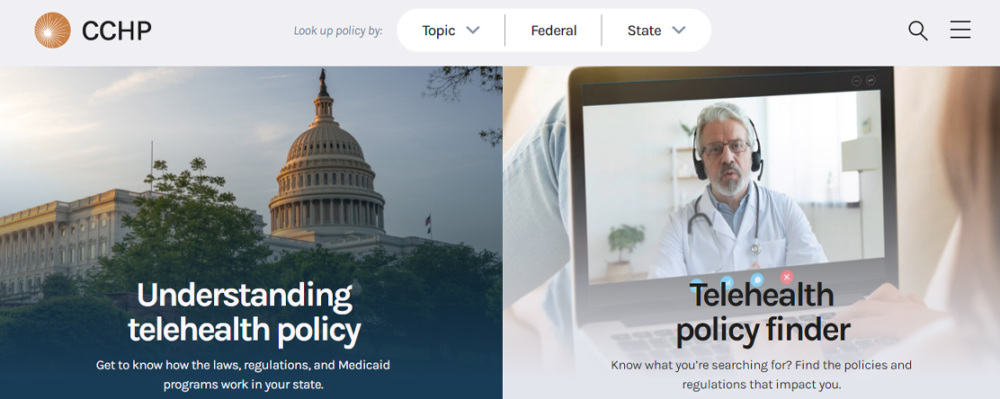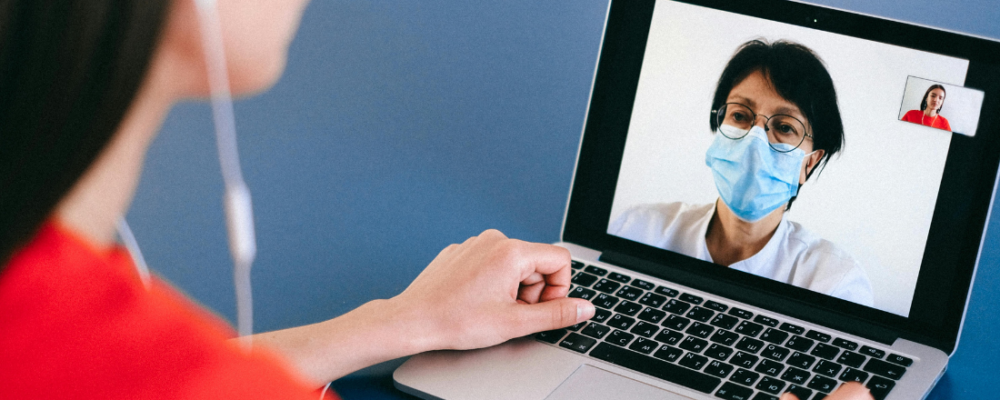
Telehealth Policy in a Post-COVID-19 World
-
Focus Areas
Data, Technology & Innovation -
Issues
Rural Health, Technology & Telehealth -
Programs
Center for Connected Health Policy -
Strategic Initiatives
COVID-19

Insights from Mei Kwong, Executive Director of PHI’s Center for Connected Health Policy
During the COVID-19 crisis, there has been unprecedented interest in the use of telehealth as its unique qualities make it an invaluable tool when faced with a highly infectious disease. Pre-COVID-19 telehealth policy barriers have been removed at a rapid rate; however, these changes are temporary. Once the initial reaction to the temporary waivers had passed, the next question on many people’s minds is, “What policy changes will stay after COVID-19?”
What follows is not based upon any “inside” information or discussions with policymakers. It is only the Center for Connected Health Policy’s assessment of what temporary policy changes are likely to remain and what issues policymakers may wish to pursue further action.
Reimbursement
Many of the waivers during the public health emergency (PHE) addressed reimbursement policy. Pre-COVID-19, the majority of established telehealth related policies centered on reimbursement. Reimbursement policy is usually structured around four specific questions:
- Where was the patient located when the telehealth interaction took place?
- Who was providing the services?
- What services are covered?
- What modality was used to deliver the service?
There is a good possibility changes related to all of these issues will remain after the PHE or at least be of further discussion for policymaking.
Specifically, the home will likely continue to be an eligible location where a patient may receive services. There will still be a good portion of the population that will continue to minimize their activities outside of the home, some out of necessity as they may be particularly vulnerable to COVID-19. They will still need to receive services so allowing the home to be a continued eligible originating site will likely remain.
Pre-COVID-19 the home was allowed as an eligible originating site in Medicare and some Medicaid programs, but only for very specific services. If the home is to continue to be an eligible originating site, the types of services provided in the home will need to be expanded from what was allowed pre-COVID-19. Therefore, the expansion of the types of services covered when delivered via telehealth will likely remain in some form. Where Medicare is concerned, this is also one area where they would not need a statutory change to allow for more services to be reimbursed if delivered via telehealth. The Centers for Medicare and Medicaid Services (CMS) is only required by law to have a process in place to decide what services should be reimbursed if delivered via telehealth. Therefore, CMS could easily let the expanded COVID-19 list of codes stand.
Additionally, CMS has some flexibility on what is an eligible originating site, geographically. Federal law requires it to be in a “rural” area, but there is no definition given in statute to “rural” as it applies to telehealth. CMS does have it within their powers to have a definition that would geographically encompass more locations than what was eligible pre-COVID-19 by defining “rural” more broadly. There is also precedent for CMS taking such action as it was redefined in 2014.
It is also possible that the expanded list of what is an eligible provider may remain. During this time, it became quite apparent that many eligible, but necessary providers were left off the list of what practitioners were eligible to provide services via telehealth and be reimbursed. Federally Qualified Health Centers (FQHCs), Rural Health Clinics (RHCs) and allied health professionals such as physical and occupational therapists were notably missing pre-COVID-19. In both Medicare and many Medicaid programs, allowing these providers to be eligible providers is a temporary change that will only last during the PHE. However, there has been recognition that these practitioners are needed to provide services if patients continue to limit their activities outside of the home. This will likely be a change that remains, especially if the types of services that can be provided via telehealth also expands.
During COVID-19, recognizing not everyone has access to the technology in their home, policymakers made allowances for audio-only phone to be a means in which to provide services. It is less clear if this change will remain, but what it has brought to many policymakers’ attention is that there is a digital divide that exists in the population. As we navigate the post-COVID-19 world and if telehealth becomes more ubiquitous, this disparity will need to be addressed less we leave segments of the population behind, unserved and vulnerable.
Other policy issues
COVID-19 raised other telehealth policy issues unrelated to reimbursement, but significantly impacting telehealth. While the temporary measures related to these issues are less likely to remain intact with what was done to address COVID-19, the issues have been elevated and we may find policymakers more interested and invested in exploring and creating policy to address them than they were pre-COVID-19. These issues are:
- Broadband – Not having adequate connectivity contributes to the aforementioned digital divide issue. While broadband and licensure (discussed below) have always been significant issues raised when discussing telehealth even in pre-COVID-19 times, the discussion may be pushed to a much higher priority now.
- Licensure – One significant development during COVID-19 that may have made policymakers more interested in discussing licensure issues is the personal impact they may have felt. For example, college campuses closed down and students were sent home. However, some of those students were receiving services from their student health program on campus. Yet, if the student went home to another state, they were unable to access the continued services of that student health provider even if that provider was able to utilize telehealth, because it was unlikely that provider would be licensed in the student’s home state. There is the possibility that some lawmakers have experienced this first hand or knew of someone who did. These types of examples of personal experience may make policymakers more open to significant discussions regarding licensure.
- HIPAA/Privacy – It is unlikely the temporary discretion exercised on fining for HIPAA violations will remain, but this temporary waiver may spur discussions on whether telehealth-specific policies in HIPAA are needed. Currently, there is nothing in HIPAA that specifically relates to telehealth. Policymakers may decide that this needs to change in a post-COVID-19 world.
- Prescribing – During the PHE, one of the exceptions to allowing telehealth to be used to prescribe a controlled substance without the prescribing practitioner having conducted an in-person exam of the patient was activated. It will go away once the PHE is declared over, leaving the same narrow exceptions telehealth faced pre-COVID-19. One of those exceptions was creation of a registry which was to have happened at the end of 2019, but the Drug Enforcement Agency (DEA) have yet to issue their proposed regulations. There could be increased pressure on the DEA to at least create the registry if not a re-examination of how and when to use telehealth in prescribing controlled substances.
One thing we are certain of, the telehealth landscape is unlikely to revert back to the way it was. Too many consumers have been exposed and utilized telehealth and it will be difficult to take it away once people have experienced it. COVID-19 has significantly impacted all aspects of our lives and will continue to do so for the foreseeable future. Telehealth will play a part in what that future will look like.
Watch the video: Telehealth Policy in a Post-COVID-19 World
Originally published by Center for Connected Health Policy
Work With Us
You change the world. We do the rest. Explore fiscal sponsorship at PHI.
Support Us
Together, we can accelerate our response to public health’s most critical issues.
Find Employment
Begin your career at the Public Health Institute.



